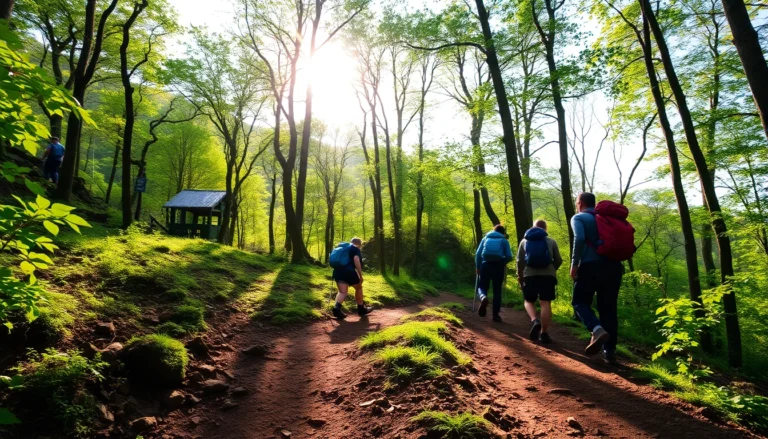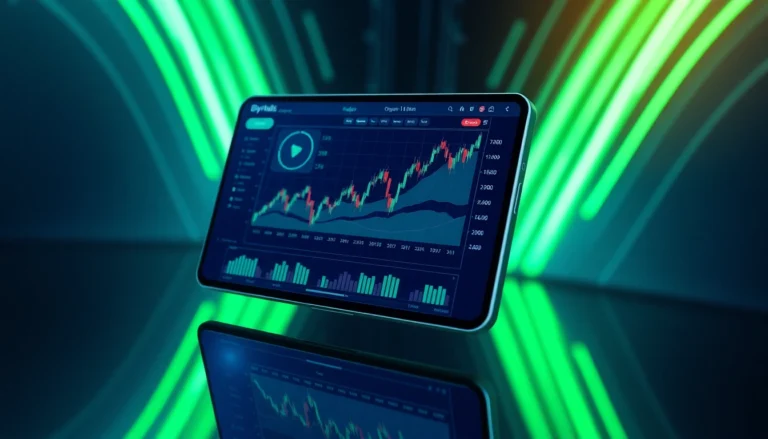
Introduction to Mount Rinjani
Perched majestically on the island of Lombok in Indonesia, Mt. Rinjani stands as one of Southeast Asia’s most iconic and awe-inspiring volcanoes. Rising to an impressive elevation of 3,726 meters, it is Indonesia’s second-highest volcano and a UNESCO-recognized national park, drawing thousands of adventurers and nature enthusiasts annually. Its grandeur not only defines the landscape of Lombok but also offers a gateway into a rich tapestry of geological history, vibrant ecosystems, and cultural significance. Whether you are a seasoned trekker or a casual traveler seeking unique natural beauty, Rinjani promises an unforgettable experience rooted in its natural splendor and cultural heritage.
Geographical Location and Significance of Rinjani
Located on the north-central part of Lombok Island, Mount Rinjani forms an imposing presence within the Rinjani National Park, a sprawling protected area that covers over 41,000 hectares. The volcano straddles the regencies of North Lombok and Central Lombok, orchestrating a striking silhouette against the often clear, blue skies of Indonesia. Its strategic location within the Wallacea biodiversity zone amplifies its ecological importance, hosting diverse flora and fauna endemic to this transition zone between Asian and Australasian biogeographical regions.
The prominence of Rinjani in the island’s topography makes it a central feature of Lombok’s geographic and cultural identity. It influences local climate patterns, watersheds, and agriculture, especially the lush surrounding rice terraces and fertile lands in the nearby valleys that rely heavily on its volcanic activity for nutrient-rich soil.
Historical Eruptions and Geological Features
As an active stratovolcano, Mount Rinjani has a storied geological past characterized by several significant eruptions that have shaped its current form. The most recent major eruption occurred in 2016, followed by periodic smaller eruptions and ash plumes, as documented by the Smithsonian Institution’s Global Volcanism Program. These volcanic activities have contributed to the creation of features such as Segara Anakan Lake, which is situated within the caldera, and the surrounding lava flows that trace Rinjani’s vent history over millennia.
Rinjani’s geological structure comprises a complex multi-layered volcanic cone, with a large crater measuring approximately 8-10 km in diameter. The crater lake, Segara Anakan, is a stunning sight, often shrouded in mist and surrounded by fumaroles and hot springs that hint at the mountain’s restless subterranean activity. These features make Rinjani a prime subject for volcanological study, revealing insights into volcanic processes and the dynamic nature of Indonesia’s volcanic arc.
Why Mount Rinjani Is a Must-Visit Destination
More than just a geological marvel, Mount Rinjani embodies an adventure that combines physical challenge with spiritual and cultural enrichment. Its breathtaking vistas, from verdant valleys and waterfalls to expansive crater lakes and panoramic vistas from the summit, make it a compelling destination for travelers seeking authentic and immersive experiences.
The variety of ecosystems within Rinjani National Park supports a wide array of wildlife and plant species, making it an ecological treasure trove. For trekkers, the journey up Rinjani offers an unparalleled sense of achievement, cultural exchange with local communities, and opportunities to witness some of Indonesia’s most pristine natural landscapes. Its appeal is multi-dimensional: adventure, ecology, spirituality, and cultural exploration converge in this extraordinary location.
Climbing Mount Rinjani: Everything You Need to Know
Preparation and Essential Equipment
Trekking Mount Rinjani is a physically demanding endeavor that requires meticulous planning, appropriate gear, and mental resilience. Proper preparation involves understanding the terrain, climate, and physical demands of the ascent. Essential equipment includes high-quality trekking shoes with good ankle support, layered clothing suitable for varying temperatures and wind conditions, a durable backpack, sleeping gear for overnight camps, and safety essentials like headlamps, trekking poles, and first aid kits.
Given the altitude and changing weather, packing thermal wear, waterproof jackets, and sturdy hiking socks is crucial. Altitude sickness is a concern at higher elevations; hence, acclimatization hikes and hydration are emphasized in preparatory routines.
Popular Trekking Routes and Difficulty Levels
There are multiple routes to ascend Rinjani, each offering different challenges and scenic experiences:
- Sembalun Route: Known for its gradually ascending trail with stunning views of the surrounding landscape, making it suitable for beginners with decent fitness levels but still demanding.
- Senaru Route: Often considered more challenging due to steeper inclines, it requires additional endurance but offers unique perspectives of the caldera and lake.
- Torean Route: Less trafficked, providing a more remote trek with raw natural beauty, suited for experienced hikers seeking solitude.
The overall difficulty varies from moderate to strenuous, with treks ranging from 2 to 4 days depending on pace, acclimatization, and chosen routes.
Guide Costs, Permits, and Safety Tips
Employing experienced guides is highly recommended, not only for navigation but for safety and cultural insights. Guide fees typically range around Rp. 350,000 per day, with additional costs for porters and permits. Permits are acquired through the Rinjani National Park authorities and are necessary to ensure environmental conservation and safety compliance.
Safety tips include registering with park authorities before the trek, monitoring weather conditions closely, scheduling acclimatization days, and maintaining communication devices. Trekkers should also respect local traditions and environmental regulations to preserve the pristine nature for future explorers.
Experiencing the Rinjani National Park
Flora, Fauna, and Unique Ecosystems
The park’s biodiversity is marked by lush forests, endemic wildlife, and diverse plant species. The montane forests harbor species like the Lombok kingfisher and the endangered Lutung or Lombok monkey. Rare orchids and carnivorous plants thrive in the cooler, shaded regions. The park’s transition zones host a mix of tropical rainforests, grasslands, and alpine ecosystems at higher elevations, creating an ecologically vibrant environment.
Conservation efforts focus on protecting these ecosystems from illegal logging, poaching, and climate change impacts, ensuring the longevity of Lombok’s natural heritage.
Waterfalls, Hot Springs, and Other Attractions
Beyond hiking, Rinjani offers a variety of natural attractions such as the Sendang Gile and Tiu Kelep waterfalls near Senaru, which are accessible via short hikes and popular among visitors for their refreshing waters. The hot springs at Banyu Urip and the Segara Anak crater lake provide geothermal bathing experiences, relaxing exhausted trekkers while offering stunning views of the volcano’s active venting.
For photography and sightseeing, the sunrise from the summit is a must-see, where panoramic views of the surrounding islands and ocean unfold beneath a blanket of clouds.
Best Time to Visit and Environmental Conservation
The ideal trekking season spans from May to October, during the dry season when weather conditions are more predictable. Visiting outside this window increases the risk of rain, mudslides, and challenging navigation. Visitors are urged to practice Leave No Trace principles, minimizing their environmental impact by disposing of waste responsibly, staying on established trails, and respecting wildlife habitats.
Practical Tips for Your Rinjani Adventure
Planning Your Trekking Trip Step-by-Step
Successful Rinjani expeditions require comprehensive planning:
- Research and Permits: Understand the routes, required permits, and hire certified guides.
- Gear Preparation: Pack appropriate gear based on the season and route choice.
- Health and Fitness: Engage in physical training focusing on endurance and altitude readiness.
- Travel Arrangements: Book accommodations and transportation in Lombok in advance.
- Environmental and Cultural Respect: Learn about local customs and conservation practices.
Tracking weather updates, informing loved ones of your itinerary, and preparing contingency plans are equally vital components of trip success.
Local Cultural Insights and Respectful Tourism
The local Sasak and Lombok communities hold deep spiritual connections to Mount Rinjani. Respect cultural sites and rituals, such as offerings and ceremonies performed on the mountain. Engaging with local guides and villagers enriches the experience and supports sustainable tourism growth.
Post-Trek Activities and Celebrating Your Achievement
After conquering Rinjani, indulge in Lombok’s vibrant culture—visit traditional Sasak villages, enjoy local cuisine, and relax on pristine beaches like Senggigi or Kuta Lombok. Many trekkers celebrate their achievement by sharing photos, writing blog posts, or participating in community-led eco-tourism initiatives aimed at preserving Rinjani’s natural beauty.
Understanding Mount Rinjani’s Volcanic Activity and Future Eruptions
Historical Eruption Data and Impact
Rinjani’s eruptions have historically impacted both local communities and ecosystems. Notable eruptions include the eruption in 2015-2016, which led to ash clouds scattered over neighboring islands, temporary evacuations, and airport closures. The volcanic activity contributed to new lava formations, altered landscapes, and new geothermal features, reflecting its vibrant and unpredictable nature.
Studies show that eruptions tend to occur periodically, with intervals of calm that allow safe access for trekking. Monitoring of seismic activity, gas emissions, and ground deformation is ongoing to predict and mitigate eruption impacts.
Monitoring and Eruption Forecasts
Indonesia’s Volcanological Survey Agency (PVMBG) and international agencies utilize advanced monitoring systems including seismographs, thermal cameras, and satellite imagery to track Rinjani’s activity. Real-time data enable authorities to issue warnings and evacuations when necessary, minimizing risk to visitors and local inhabitants.
Future eruption forecasts depend on these continuous observations, and travelers are advised to stay updated with official advisories before attempting climbs during periods of increased activity.
Safety Measures During Volcanic Activity
Safety during volcanic unrest involves adherence to park regulations and guidance from authorities. During heightened activity, treks may be temporarily suspended. Visitors should carry emergency supplies, stay in designated zones, and follow evacuation instructions promptly. Respecting these protocols ensures personal safety and contributes to overall volcanic hazard management efforts.



